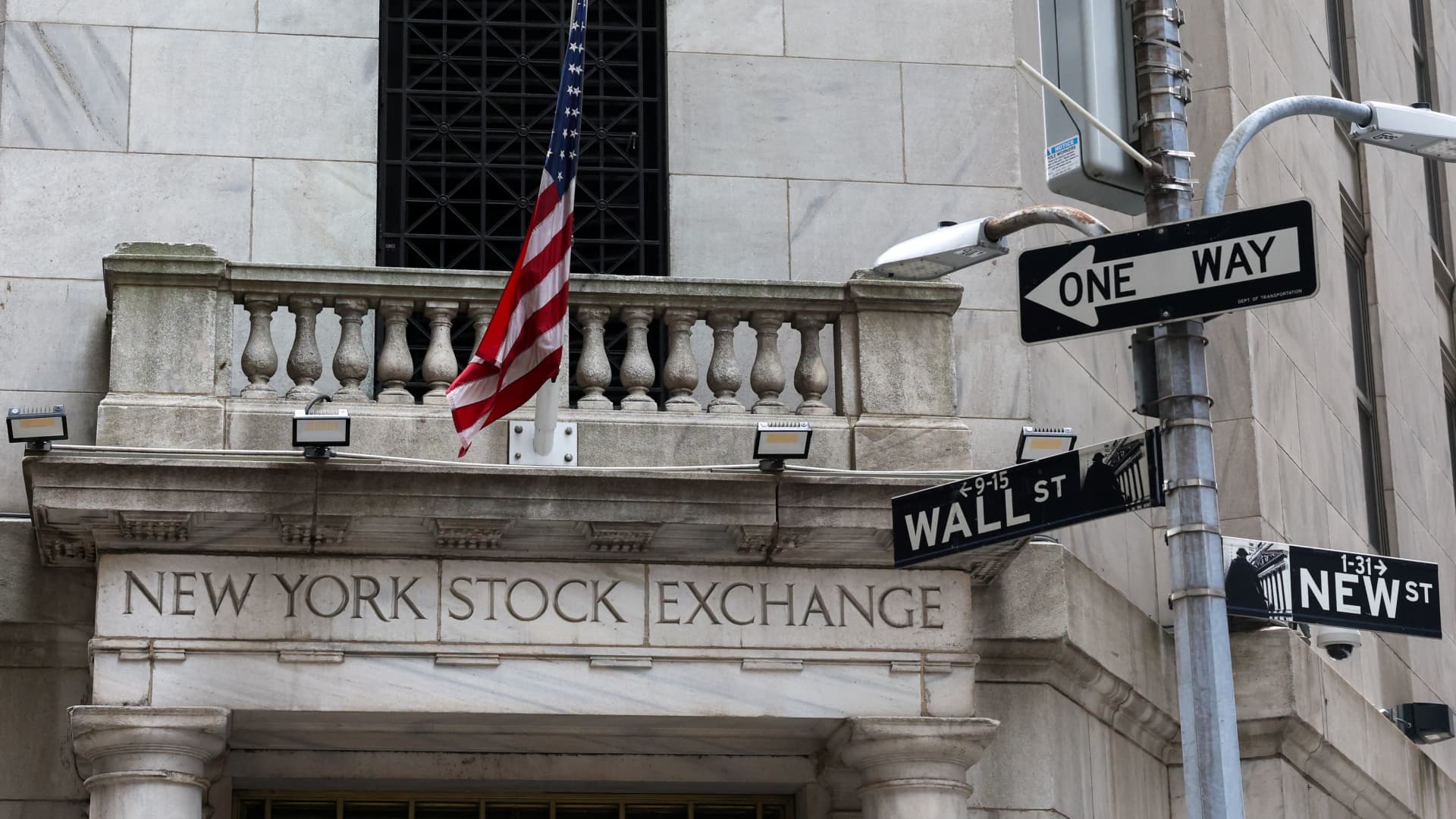Decoding Wall Street’s Jitters Amidst Washington’s Waves
The stock market, often depicted as a bastion of rationality and strategic investment, can sometimes resemble a ship navigating through a stormy sea. This past week, investors found themselves in the midst of such a tempest, buffeted by an “avalanche of news” from both Washington D.C. and Wall Street. The confluence of fluctuating trade policies, unexpected economic data, and political undercurrents created a market response characterized by fear, relief, and ultimately, caution. This report explores the key events that fueled this volatility, examines their impact on investor sentiment, and offers insights into the challenges and opportunities that lie ahead.
The Washington Effect: Tariffs, Trade, and Tweetstorms
The relationship between Wall Street and Washington has always been a delicate dance. Economic policies, regulatory changes, and even presidential tweets can send ripples—or even tsunamis—through the market. This week was a prime example of the profound influence that the political landscape wields.
Trade wars, a recurring theme in recent years, once again took center stage. The threat of escalating tariffs, particularly those imposed by President Trump, sent shivers down investors’ spines. The fear of disrupted supply chains, increased costs for businesses, and retaliatory measures from other countries loomed large, prompting sell-offs and a general sense of unease. The market hates uncertainty, and the unpredictable nature of trade negotiations only exacerbated this anxiety.
Furthermore, the Federal Reserve’s monetary policy decisions added another layer of complexity. The Fed’s decision to hold interest rates steady, while widely anticipated, still sparked debate and speculation about the future direction of monetary policy. While some welcomed the stability, others worried that the Fed was not doing enough to address potential economic headwinds. The delicate balance between controlling inflation and supporting economic growth remained a central concern for investors.
Data Dumps and Dividend Doubts: The Economic Reality Check
Beyond the political theater, economic data played a crucial role in shaping market sentiment. The release of jobs data, for instance, can have a significant impact on investor confidence. Weak jobs numbers can signal a slowing economy, leading to fears of a recession and a subsequent decline in stock prices. Conversely, strong jobs numbers can boost optimism and fuel market rallies.
This week, the jobs data painted a mixed picture, leaving investors unsure of the underlying health of the economy. The conflicting signals made it difficult to discern a clear trend, adding to the overall sense of confusion and volatility. Investors found themselves grappling with the question of whether the economy was merely experiencing a temporary slowdown or heading for a more significant downturn.
Moreover, individual company performances and outlooks further contributed to the market’s tumultuous ride. Bristol Myers Squibb, for example, despite delivering a solid quarterly beat and raising its outlook, faced investor skepticism due to concerns about its key drug, Cobenfy. This highlights the importance of individual company narratives in driving stock prices and the potential for even positive earnings reports to be overshadowed by specific challenges.
The Whiplash Effect: Fear, Relief, and Lingering Caution
The combination of political uncertainty and economic data resulted in a week of dramatic swings in the stock market. The S&P 500, after reaching a record high early in the week, experienced a four-session losing streak, demonstrating the speed at which market sentiment can shift.
This “whiplash effect” left investors feeling disoriented and unsure of the market’s direction. The initial fear of escalating trade wars and a slowing economy gave way to moments of relief as some trade tensions eased and corporate earnings showed resilience. However, the underlying caution remained, preventing any sustained rallies and highlighting the fragility of investor confidence.
The Russell 2000 Index, which tracks small-cap companies, experienced its worst week in four months, indicating that concerns about the economy’s health were particularly acute among smaller businesses. This suggests that investors were becoming increasingly selective, favoring larger, more established companies over smaller, riskier ones.
Beyond the Headlines: Hidden Trends and Emerging Opportunities
While the headlines focused on the immediate market reactions, several underlying trends and emerging opportunities deserve attention.
Sector Rotation
As investors grappled with uncertainty, a shift in sector preferences became apparent. Technology stocks, which had been leading the market’s gains for much of the year, experienced a pullback, while more defensive sectors, such as utilities and consumer staples, gained ground. This suggests that investors were seeking safety in more stable, less cyclical industries.
Geographic Diversification
Concerns about the U.S. market’s ability to outperform overseas markets led some investors to consider diversifying their portfolios geographically. The rebound on Wall Street and in the dollar did not fully alleviate these concerns, as the potential for trade tensions and economic slowdowns continued to weigh on sentiment.
The Rise of Alternative Investments
In the face of market volatility, some investors explored alternative investment strategies, such as real estate, private equity, and hedge funds. These investments can offer diversification benefits and potentially higher returns, but they also come with their own set of risks and challenges.
Conclusion: Weathering the Storm and Charting a Course Forward
The past week served as a stark reminder of the inherent volatility of the stock market and the profound impact of both political and economic forces. The “avalanche of news” from Washington and Wall Street left investors guessing, experiencing a rollercoaster of emotions from fear to relief and ultimately, a lingering sense of caution.
Embracing Prudence in a Perilous Panorama
Moving forward, investors need to navigate this complex landscape with a blend of prudence and strategic thinking. Diversification remains a key tool for mitigating risk, while careful analysis of economic data and company fundamentals is essential for making informed investment decisions. Furthermore, understanding the political landscape and its potential impact on the market is crucial for anticipating future volatility. While short-term market swings are inevitable, a long-term perspective and a disciplined approach can help investors weather the storm and achieve their financial goals. Ultimately, the ability to remain calm amidst the chaos, to learn from market fluctuations, and to adapt to changing circumstances will be the key to success in the ever-evolving world of investing.












